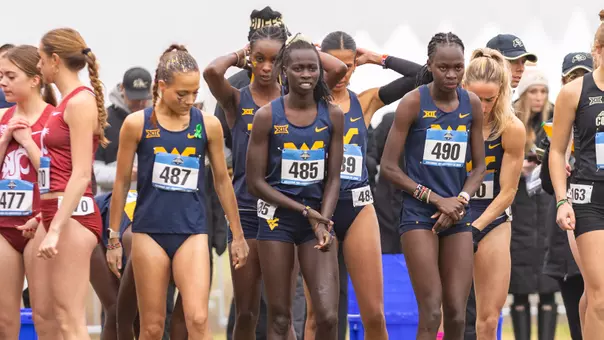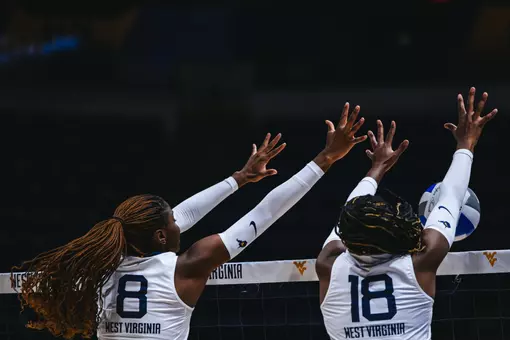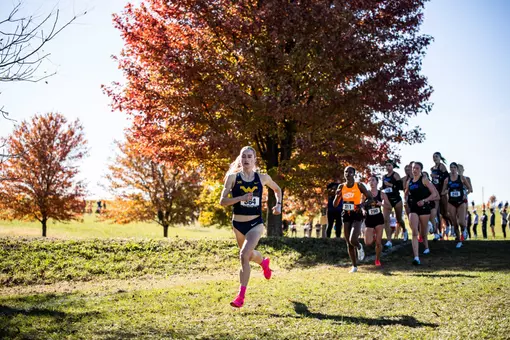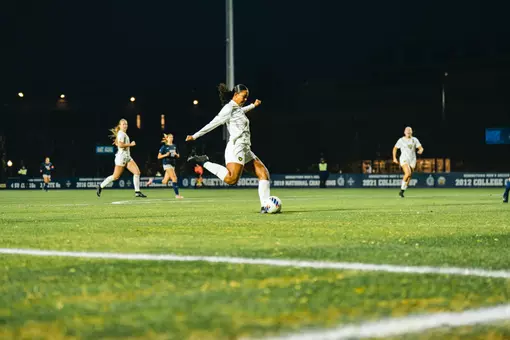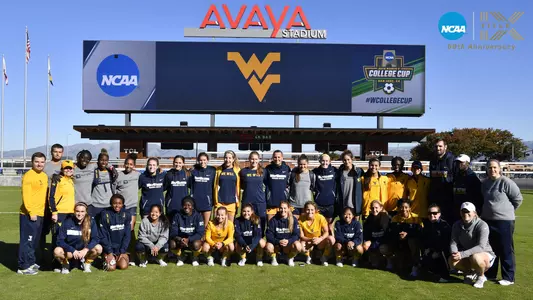
Celebrating 50 Years of Title IX at West Virginia University
June 20, 2022 09:00 AM | General, Rifle, Women's Basketball, Cross Country, Gymnastics, Rowing, Women's Soccer, Tennis, Track & Field, Volleyball
MORGANTOWN, W.Va. – What began as a federal law on June 23, 1972 has since blossomed into 50 years of continued success for West Virginia University women’s student-athletes.
Of course, we’re talking about Title IX, which was one of the provisions of the Educational Amendments Act of 1972 designed to protect people from discrimination based on sex in educational programs and activities that receive federal assistance.
This week, athletics departments from across the country are celebrating the 50th anniversary of women's intercollegiate sports.
What this groundbreaking law meant in 1972 was that West Virginia University and other public institutions that received federal money for research and scholarships needed to become compliant in order to continue receiving federal aid.
“At that time, President (James) Harlow saw the handwriting on the wall,” the late Kittie Blakemore recalled. “You have a big, land-grant institution that is going to lose a lot of federal money if they don’t go with this. With that in your corner, you can certainly go after the possibility of (starting a women’s sports program)."
Kittie Blakemore, Martha Thorn and Dr. Wincie Ann Carruth, chairperson for women’s physical education at WVU at the time, were the three leading advocates for the adoption of women’s sports at West Virginia University.
Blakemore and Thorn worked as instructors in the School of Physical Education and were staunch women’s rights supporters during a time when the Women’s Liberation Movement was really gaining momentum in the United States.
In 1969, Blakemore and Dr. Carruth were asked to help write the women’s portion of the constitution for the West Virginia Intercollegiate Athletic Conference (WVIAC), and in ensuing years, Kittie accumulated mounds of data on women’s sports programs at other institutions in anticipation of the day when West Virginia University officially adopted women’s sports.
Their efforts were mostly stonewalled in 1970 and 1971 because of a lack of funding, but that all changed in the summer of 1972.
“I was on the job a week and I had a message on my desk from Dr. Carruth, Kittie Blakemore and Martha Thorn wanting an audience with me,” then-WVU director of athletics Leland Byrd, who died earlier this year, once recalled. “I met with them the first week I was on the job, and Kittie said, ‘Hey, we’ve got to start a women’s sports program. I’m here, and I can take basketball and Martha can take tennis.’
“I said, Listen, I can sympathize with you, but we just don’t have the money to do it right now.’ Of course, Title IX was just coming in, and I said, ‘We can start this but it’s going to have to be on a shoestring. I don’t know where I’ll find the money, but you’ve got $5,000 for the first year (approximately $35,000 in today’s dollars),’” Byrd said.
Despite Byrd’s willingness to get women’s sports off the ground in the fall of 1972, it took another year before it actually happened.
“The thing that held it up in ’72 was the fact that the state didn’t know how they were going to pay the coaches,” Blakemore, who died in 2020, said seven years prior to her death. “Well, when they finally realized that the coaches were already being paid because we were teacher-coaches, then they didn’t have any question about it.”
Blakemore, Thorn and Carruth had strategically planned things out, to the degree to which sports would be phased in based on student interest and physical education staff members already in place with areas of expertise in those particular sports.
At that time, President (James) Harlow saw the handwriting on the wall. You have a big, land-grant institution that is going to lose a lot of federal money if they don’t go with this. With that in your corner, you can certainly go after the possibility of (starting a women’s sports program).-- the late Kittie Blakemore in 2013
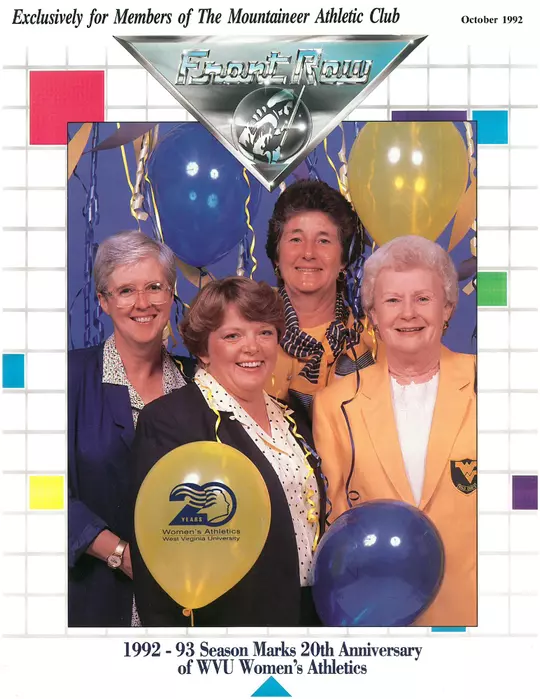
Kittie took basketball, Martha tennis and Nanette Schnaible oversaw gymnastics before Linda Burdette took over in 1974. These were the first three sports adopted at West Virginia University as a result of Title IX.
Rifle, which sometimes competed as a co-educational sport prior to Title IX when Fairmont’s Marilee Hohmann became its first female team member in 1962, was already established as a University sport and simply added women to its team rosters.
Volleyball was initiated in 1974 when Judy Thomas was identified as its coach, and then softball was adopted in 1976 when Veronica Hammersmith, by then coaching the volleyball team, took on a dual head coaching role. A lack of adequate playing facilities plagued softball from its inception, and when the athletic department encountered financial difficulties in the early 1980s, it was among the sports that were eliminated.
Donna Henderson was hired to become swimming and diving’s first head coach in 1975 before she handed the head coaching duties off to Barb Evans in 1976. A decade prior, women’s swimmer Bette Hushla made national news in the mid-1960s when she swam for the WVU men’s team, although she wasn't permitted to compete in the all-male Southern Conference Championship meet. Hushla quit the sport entirely in 1966, while Valerie Lewis, a freshman hoping to make the varsity squad after Bette, was effectively blocked from competing for WVU.
Track and field and cross country were the final two women’s sports adopted in 1978 from Blakemore’s, Thorn’s and Carruth’s initial plan. Esteemed distance coach Linda King was brought in to coach the track and cross country teams in the spring of 1978, remaining at WVU through the 1983 outdoor track season.
By then, all women’s sports were offering full scholarships to some of their student-athletes.
Blakemore said their initial goals were very ambitious back in 1972.
“We were going for all of them, if we could get them, but of course we couldn’t,” she admitted. “I had a lot of help from Martha. She and I really worked hard on this because when gymnastics started it was with a girl (Schnaible) who was only here for a year and then Linda Burdette was already here. Martha was able to start her team (in the fall of 1973).
“The unfortunate thing was we lost softball (in 1981),” Blakemore said. “If we could have kept softball, we would really be up there now. Veronica was a better softball coach than she was volleyball coach, but she had to do both, and they wouldn’t let us keep softball because we didn’t have a place on campus. They had to play over at White Park.”
Women’s soccer was added in 1996 because of its growing popularity and during a time when minimum Title IX requirements were increasing in the mid-1990s, and rowing was adopted in 2000 following a student-body survey of sports interest, according to Terri Howes, then WVU’s senior woman administrator.
At the time, rowing was a well-established club sport on campus, and its leaders approached the WVU Athletic Council about being elevated to varsity sports status. Rowing also had a logical venue with the Monongahela River flowing next to campus and the club’s boathouse being located directly across the river in Westover. That’s how it was selected over softball, which also had its advocates seeking reinstatement.
Nancy LaRocque, now Dartmouth’s head coach, was hired to coach West Virginia’s first rowing squad that year.
Blakemore was also heavily involved in the hiring of Nikki Izzo-Brown to coach the first soccer team in 1996, meaning Kittie’s fingerprints continue to remain all over WVU women’s sports some 50 years later. Izzo-Brown is arguably the most successful female coach in WVU sports history, once leading her 2016 squad to the national championship game.
We were going for all of (the proposed WVU women's sports) if we could get them, but of course we couldn’t.-- the late Kittie Blakemore in 2013
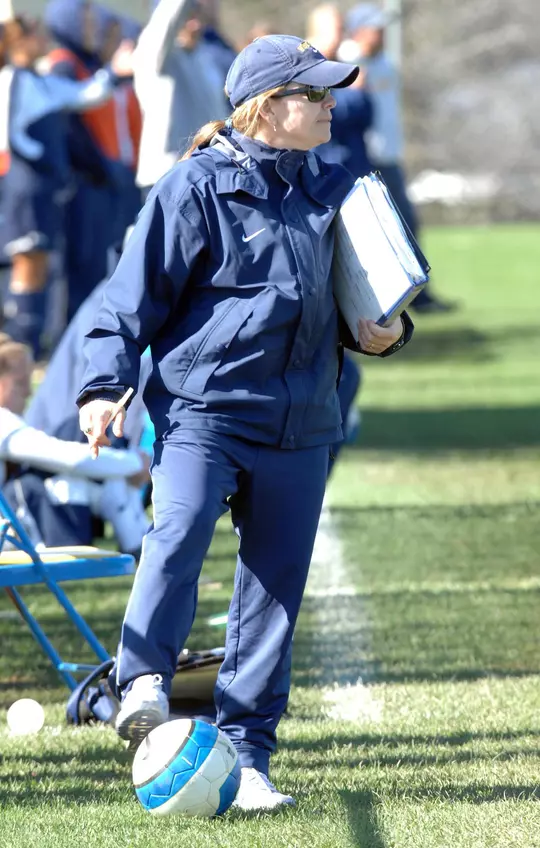
Blakemore, who died in Manassas, Virginia, during the summer of 2020, was a women’s sports advocate her entire life.
“We had many parents out there who had daughters, and they wanted them to be able to get scholarships and go to college just like their sons did,” she once explained. “I guess I was from the old school where you just do what you can do and work very carefully with it and don’t make a lot of waves.
“I found I could get things accomplished a lot quicker if I did things in this manner, but yet I was still able to do these things and get them through,” Kittie concluded.
WVU Women’s Sports Timeline (1972 to Present)
July 1972
Kittie Blakemore, Martha Thorn and Dr. Wincie Carruth advocate for the addition of women’s intercollegiate athletics at West Virginia University
1973
Women’s Basketball, Gymnastics and Tennis are the first women’s varsity sports at WVU
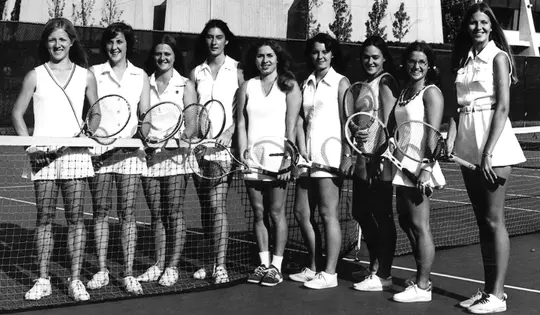
Sept. 20, 1973
Women’s Tennis plays the first women’s varsity competition with a match against Fairmont State College
1974
Volleyball is added as a WVU varsity sport
Jan. 16, 1974
Women’s Basketball plays its first game, a 59-55 victory over West Liberty State College
1975
Swimming and diving becomes a WVU varsity sport with Donna Henderson tabbed as its first coach
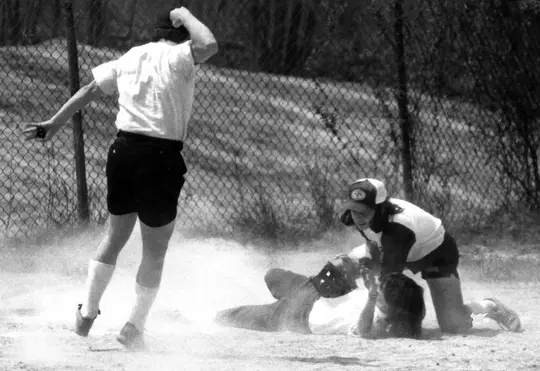
1976
Softball becomes a varsity sport and compiles a 101-58 record from 1976-82 under Veronica Hammersmith, who also coached WVU Volleyball from 1975-2009
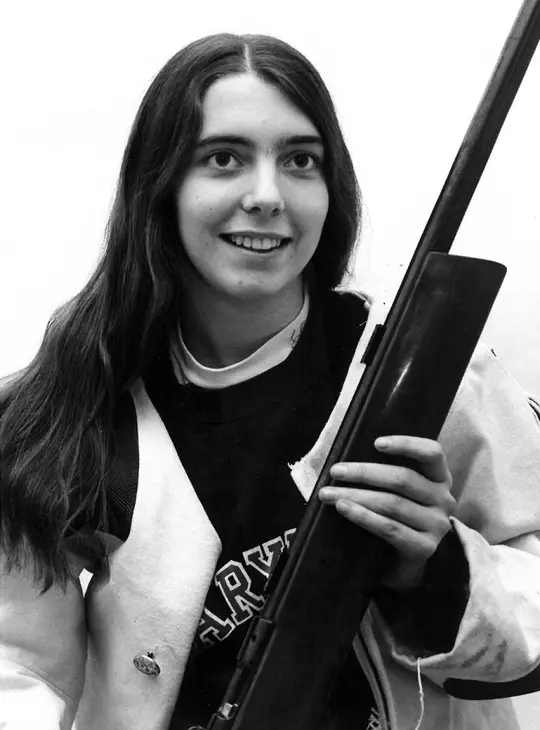
1977
Rifle’s Kathy Kelly becomes WVU first female All-American
1978
Track and field and cross country become varsity sports under the direction of Linda King
1982
Gymnastics competes in the AIAW Championship, the first of four national-meet team appearances (1995, 1999 and 2000 NCAA Championships) under coach Linda Burdette
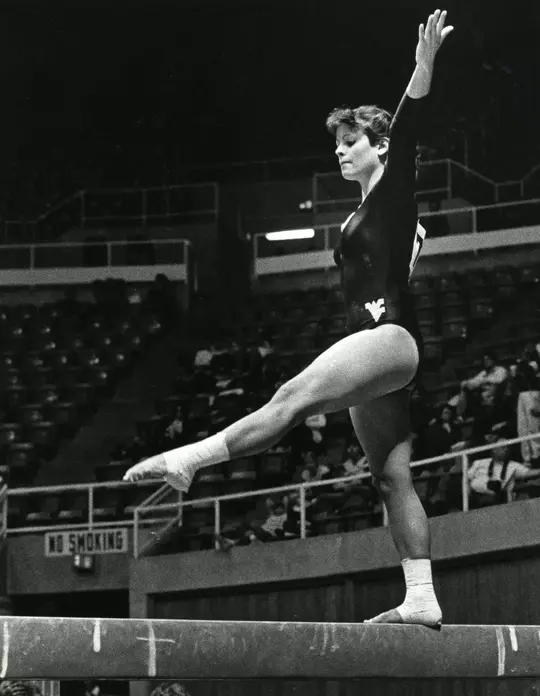
1982
Gymnast Shari Retton is WVU’s first female All-American in a women’s sport while competing in the AIAW
1983
Rifle wins the first of its 19 national championships during the Title IX era
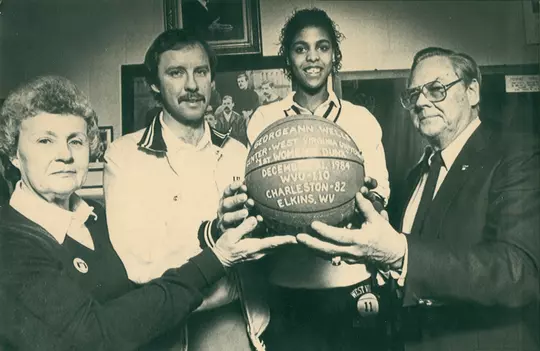
Dec. 21, 1984
Georgeann Wells is the first woman to dunk in a basketball game
1988
Shelly Poe becomes the first female sports information director in the country for Division I football
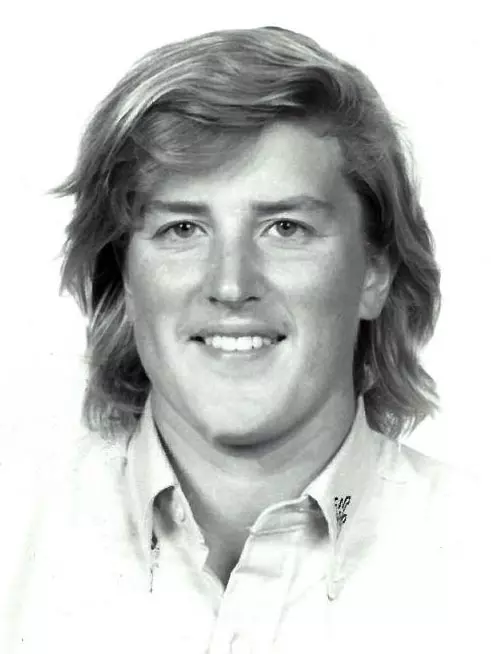
1988
Swimming’s Aileen Convery is WVU’s first female Olympian, representing Ireland
1989
Women’s basketball claims the Atlantic 10 Tournament Championship to become the first WVU women’s team to qualify for an NCAA tournament; the women’s program later won an Atlantic 10 regular season title in 1992 and Big 12 titles in 2014 and 2017
1991
Rifle’s Ann-Marie Pfiffner becomes WVU’s first female national champion and repeats the next season
Mar. 22, 1992
Women’s basketball serves as host of Morgantown’s first-ever NCAA Tournament women’s event, defeating Clemson 73-72 in front of 8,185 fans
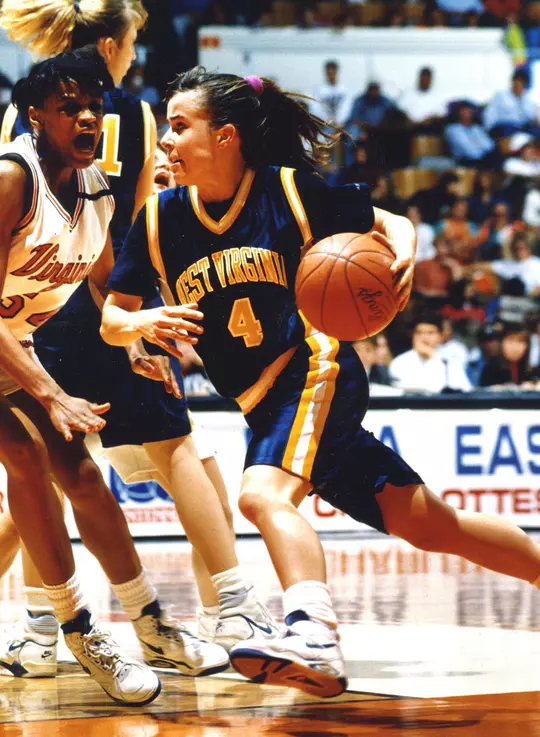
1992
Women’s Basketball’s Rosemary Kosiorek is the Frances Pomeroy Naismith National Player of the Year
1992
Kittie Blakemore becomes WVU’s first female athletics senior woman administrator during the Title IX era. Eleanor Negri Lamb once held the title of assistant athletic director from 1971-76.
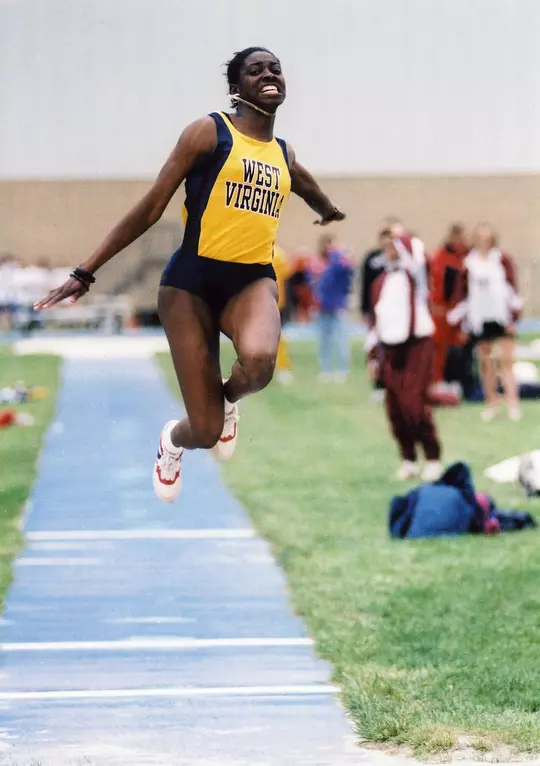
1995
Track’s Pat Itanyi wins the NCAA outdoor long jump national championship to become WVU’s first female national champ in a women’s sport
1996
Women’s soccer is added as a WVU varsity sport
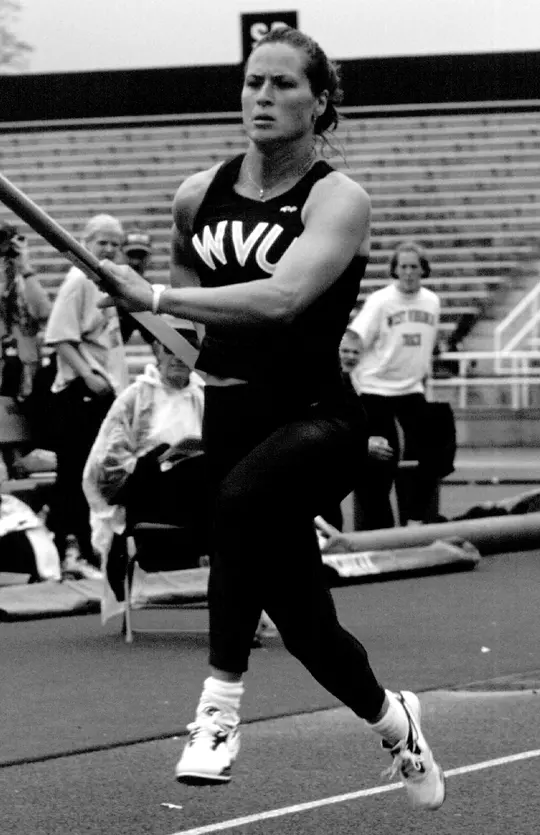
1998
Kristin Quackenbush becomes an All-American in the pole vault in outdoor track. Coupled with her All-America honors in gymnastics (1994-95-96), she is WVU’s first female, two-sport All-American
1999
Kate Vermeulen wins the national championship in the mile at the NCAA Indoor Championships
2000
Rowing is added as a varsity sport at WVU
2000
Women’s soccer makes the first of 21 consecutive NCAA appearances
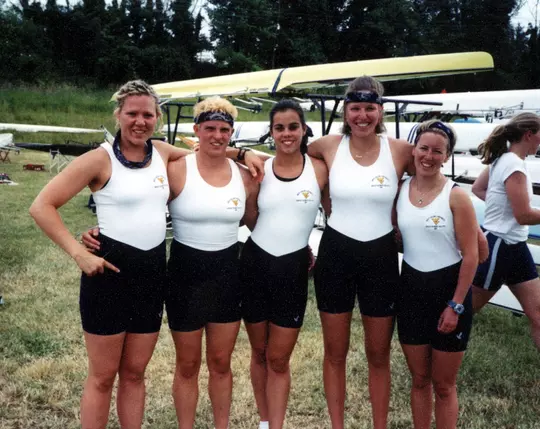
2001
Rowing’s varsity 4+ boat of Tina Griffth, Risha Kelly, Erin Nisbet, Noelle Dodge and coxswain Christine DeRienzo win the Dad Vail Regatta and are selected to represent the United States at the Henley Royal Regatta in England, one of the most prestigious events in rowing
2002
Katie Barnes is the first WVU women’s soccer player drafted by a women’s pro league, chosen in the second round by the Carolina Courage
2002
Megan Metcalfe is the first WVU woman to win an NCAA Regional cross country title
2004
Women’s Basketball’s Kate Bulger is WVU’s first WNBA draft pick (third round by the Minnesota Lynx)
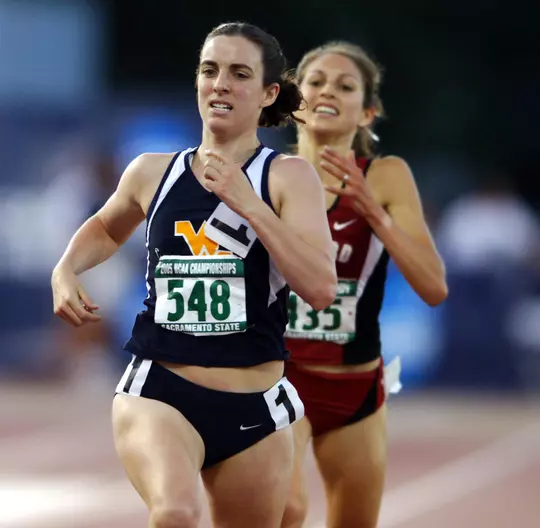
2005
Megan Metcalfe wins the national championship in the 5,000 meters at the NCAA outdoor championships
2008
Cross Country finishes fourth in the NCAA Championships, one of its 11 NCAA team appearances
2012
Petra Zublasing wins the air rifle national championship and then repeats in 2013 and adds the smallbore national title

2014
Keli Zinn becomes the first female Athletics Director ever at WVU when she replaced Oliver Luck on an interim basis. Zinn is the deputy director and chief operating officer of WVU Athletics and is the sport administrator for football
2015
Maren Prediger wins air rifle national championship
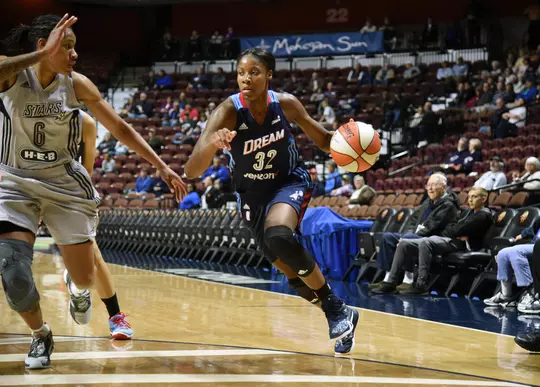
2016
Women’s basketball’s Bria Holmes is WVU’s first WNBA first-round draft pick (11th overall by the Atlanta Dream
2016
Ginny Thrasher wins the national championship in air rifle and smallbore
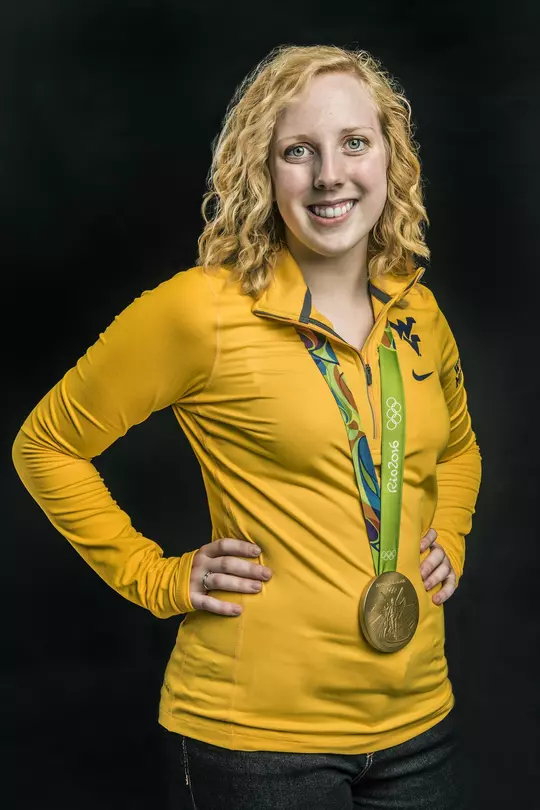
Aug. 6, 2016
Ginny Thrasher wins a gold medal for the United States in the 10 meter air rifle at the Rio Olympics, becoming WVU’s first female Olympic medalist and gold medalist
Dec. 4, 2016
Women’s soccer becomes the first WVU women’s team to play for a national championship (a 3-2 loss to USC in the College Cup)

2016
Women’s Soccer’s Kadeisha Buchanan wins the Hermann Trophy, given to the top NCAA soccer player in the country
2017
Morgan Phillips wins the first of two consecutive smallbore national championships and teammate Milica Babic wins the air rifle national championship
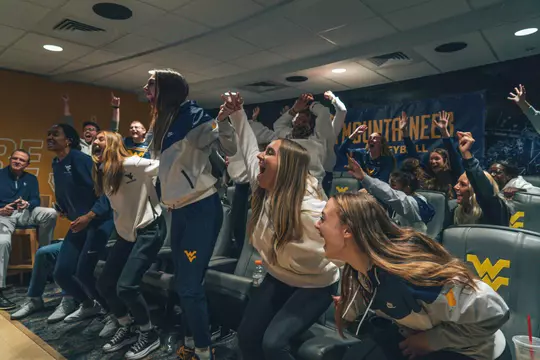

2021
Volleyball qualifies for the NCAA tournament for the first time
2021
Redshirt freshman Ceili McCabe becomes the first three-time All-American in one year during the Big 12 era with her third place finish at steeple chase in Eugene, Oregon at the 2022 NCAA Outdoor Championships.
Michael Fragale, Bryan Messerly, Joe Swan and Terri Howes contributed to this historical timeline
On Thursday, read about Kittie Blakemore's, Martha Thorn's, Dr. Wincie Ann Carruth's and Dr. Leland Byrd's efforts to start women's sports at West Virginia University in 1973.
